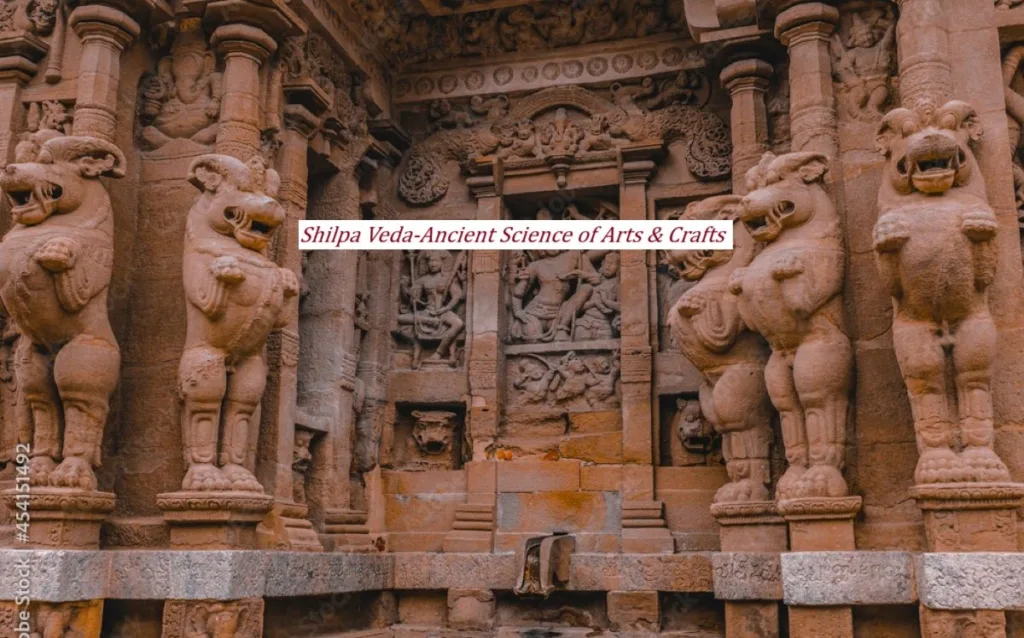Shilpa Shastras, a term that translates to the Science of Shilpa (arts and crafts), encompasses a collection of Hindu texts from antiquity that delve into the intricate details of various arts, crafts, and their underlying design principles. These texts offer invaluable insights into the world of artistic expression, sculpting, architecture, and much more, reflecting the rich cultural heritage of ancient India.
Intersection of Sculpture, Iconography, and Architecture
In the context of Hindu temple architecture and sculpture, the Shilpa Shastras played a pivotal role as manuals guiding the creation of sculptures and the principles of Hindu iconography. These texts not only provided guidelines for the proportions of sculpted figures but also covered composition, meaning, and the entire spectrum of architectural rules.
Diverse Range of Arts and Crafts
The Shilpa Shastras enumerate a comprehensive list of sixty-four Bahya-kala or external arts, which encompass a myriad of crafts such as carpentry, architecture, jewelry making, acting, dancing, music, medicine, and poetry. Additionally, there are sixty-four Abhyantara-kala or secret arts, which include a wide array of subjects, including some of a more intimate nature.
Shilpa Shastras vs. Vastu Shastras
While often intertwined, Shilpa Shastras primarily focus on arts and crafts, including the creation of statues, icons, murals, painting, carpentry, pottery, jewelry, textiles, and more. On the other hand, Vastu Shastras deal primarily with architectural aspects, guiding the construction of houses, temples, forts, and the layout of villages and towns.
Unraveling the Concept of Shilpa Shastras
The term “Shilpa Shastras” originates from the fusion of “Shilpa,” signifying art or craft, and “Shastra,” which translates to science. This umbrella term encapsulates the science of art and crafts in ancient India, encompassing a wide range of creative endeavors. Ancient texts employ the terms “Shilpin” for male artists and “Shilpini” for female artists, reflecting the inclusivity of these crafts.
The Multifaceted Nature of Shilpa
The term “Shilpa” is multifaceted, spanning a vast array of crafts and cultural aspects. It encompasses roles such as sculptor, potter, perfumer, painter, weaver, architect, dancer, musician, and even the arts of love, among countless others. Ancient Indian texts emphasize the limitless nature of arts, recognizing sixty-four Kala (arts) and thirty-two Vidyas (fields of knowledge).
Mythological Ties and Vishvakarma
Shilpa finds its roots in Agamas, Puranas, and Vastu Shastra, interwoven with the mythology of Vishvakarma, the celestial engineer and architect of Hinduism. This mythological backdrop adds depth and significance to the practice of Shilpa, connecting it to divine creation.
Shilpa Shastras in Painting
The Shilpa Shastras extend their reach to the realm of painting as well. Notably, the Narada Shilpa Shastra dedicates specific chapters to the art of painting, elaborating on miniature and large paintings. Similarly, the Saraswati Shilpa Shastra explores various painting types, communication through art, and color preparation.
Carpentry and Shilpa Shastras
Carpentry, a vital aspect of Shilpa Shastras, is detailed in the first chapter of the Manasara text. This chapter elaborates on the principles of measurement in carpentry. The Mayamata text from the 9th century and the Shilparatna text from the 16th century delve into different aspects of woodwork and carpentry techniques, highlighting the profound influence of these Shastras on construction practices, including temple architecture.
Metal Craft and the Vedas
The Vedas, particularly the Atharva Veda and Sthapatya Veda, provide insights into various arts and crafts within the framework of Shilpa Shastra and Yantra Sarvasva. Casting techniques and equipment used in metalwork are mentioned in the Rig Veda. Sanskrit texts like Shilparatna and Manasara offer in-depth knowledge about working with metals, including the sophisticated cire perdue (lost wax) casting process.
Shilpa Shastra Education in Ancient India
The practice of Shilpa Shastras was egalitarian, transcending birth barriers. Regardless of class, caste, or gender, everyone had access to and engaged in the arts. Ancient texts emphasized that all crafts were open to individuals irrespective of their family’s traditional occupation, promoting inclusivity and diversity.
Tradition of Apprenticeship
Apprenticeship was the primary mode of learning Shilpa Shastras. Aspiring artists trained under masters, imbibing knowledge from childhood. This comprehensive training encompassed not only artistic skills but also cultural, mathematical, and ethical aspects.
Guilds and their Role
Guilds, known as Sreṇi, played a significant role in the practice of Shilpa Shastras. These guilds established their own codes of conduct, and their laws were respected by both Hindu and Buddhist kings. Guilds spanned across various castes and creeds, demonstrating the universality of artistic pursuits.
Art as a Spiritual Endeavor
In ancient India, creative work was regarded as a sacred practice. Artists infused their work with spiritual essence, reflecting the divine in their creations. This belief persists today, as rituals and practices continue to demonstrate the reverence and sanctity associated with art.
Conclusion
The Shilpa Shastras represent a treasure trove of knowledge encompassing the diverse spectrum of arts and crafts in ancient India. These texts provide insights into not only the technical aspects of creation but also the spiritual and cultural dimensions of artistic expression. As we delve into the world of Shilpa Shastras, we discover a profound legacy that continues to inspire and resonate through the ages.

